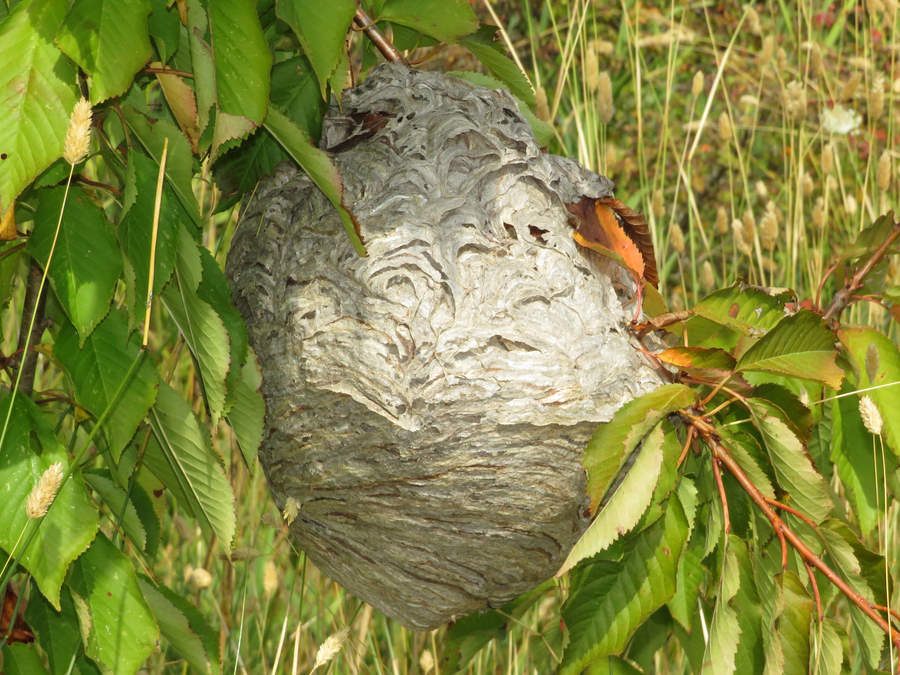
Welcome to Montana Wasps. The stinging wasps receive the most attention in homes and gardens across the state because of their potential harm to people. Seeing a soccer ball sized nest like the one in the top picture indicates their residents are nearby.
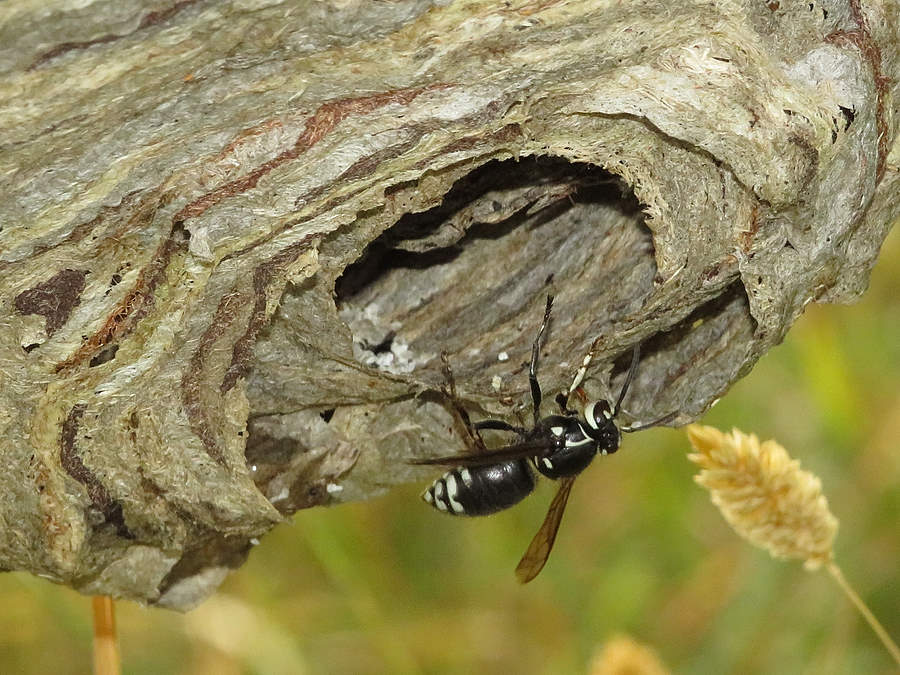
A close look at the nest opening, as shown in the picture, reveals the residents are Bald-faced hornets, one of the aerial yellowjackets.
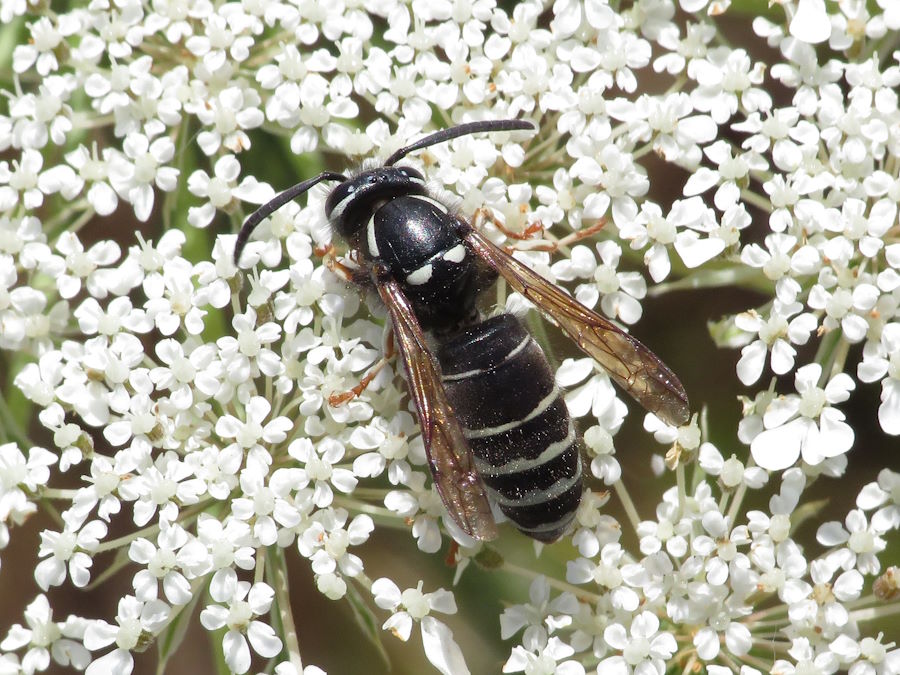
For visitors interested in identification, the yellowjacket family has a couple of species with black and white markings. Here’s the black jacket with a pattern different from the Bald-faced hornet.
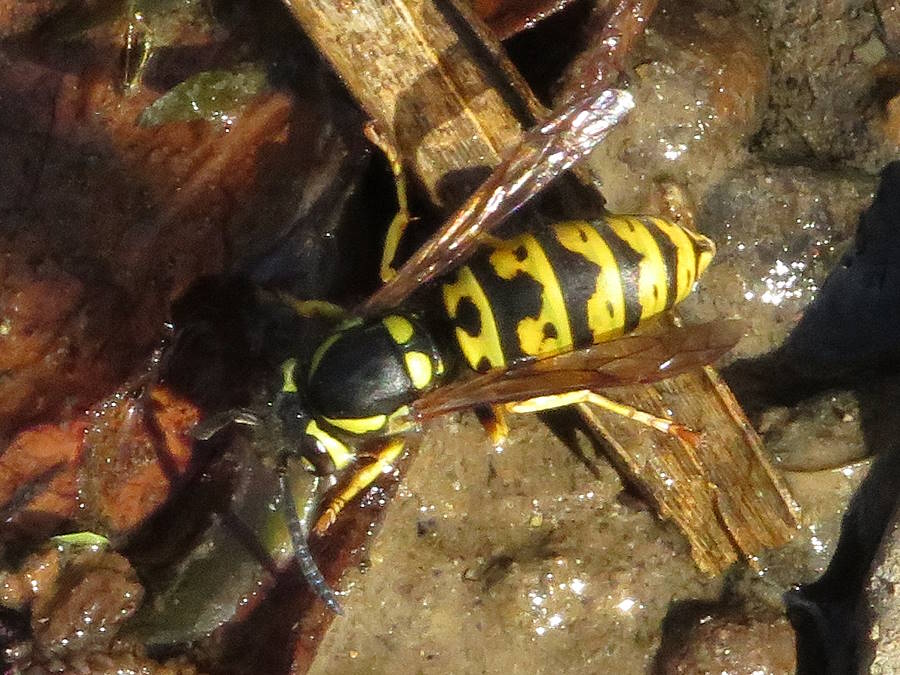
Prairie yellowjackets have the more common yellow and black markings, with the black markings more circular than the more common Western yellowjackets.
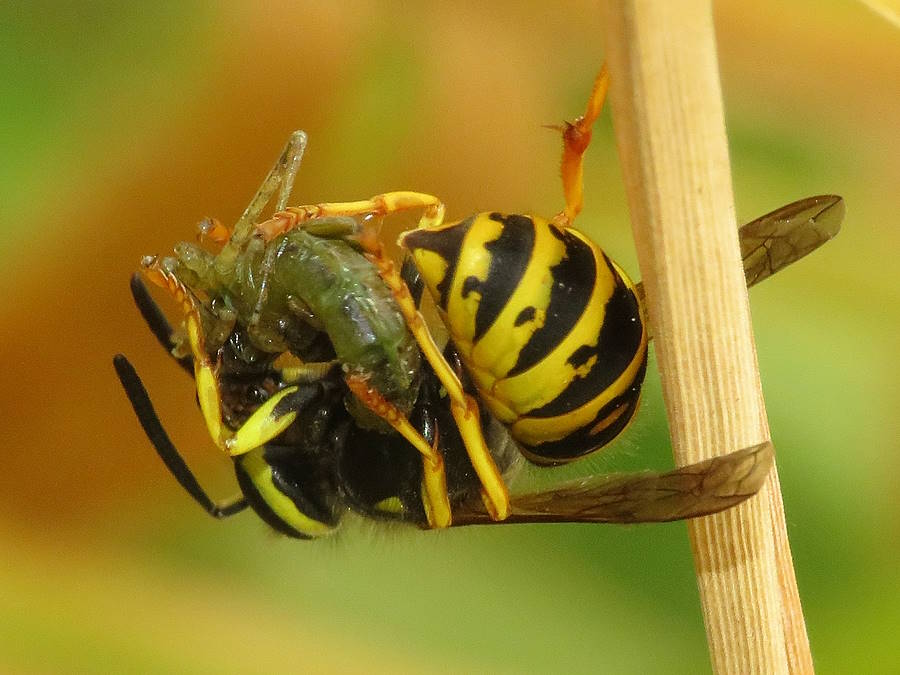
Yellowjackets fly almost continuously throughout the day searching for larval prey. As long as people do not disturb the nest, these single yellowjackets pose little problem.
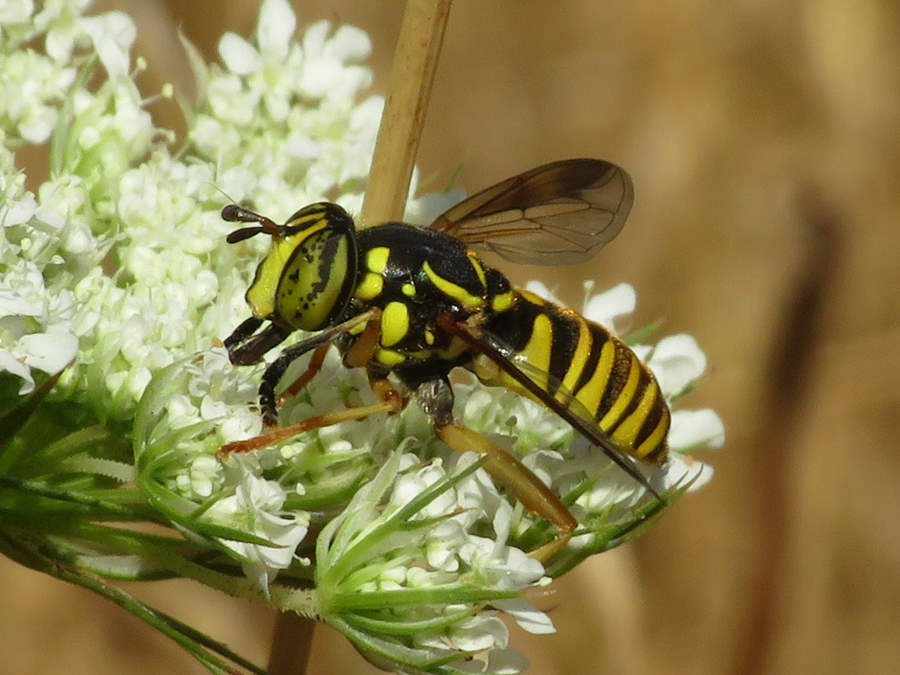
Yellow and black markings do not always mean yellowjackets. The picture shows a fly that is a Yellowjacket mimic. A quick look at the eyes provides a good ID clue.
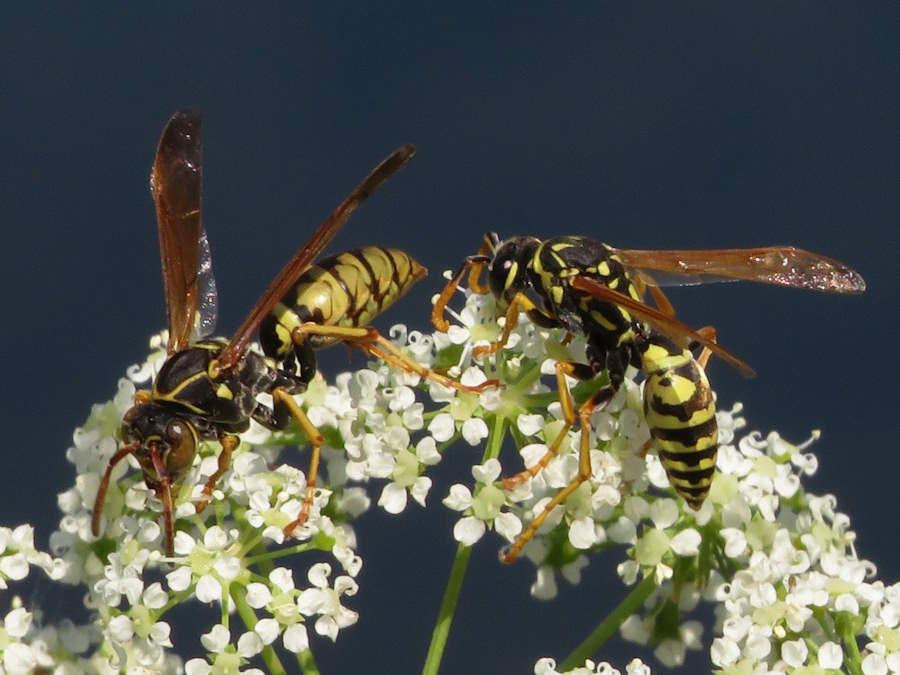
Paper wasps build the flat, umbrella shaped nests. The picture shows a comparison of the two most common paper wasp species in Montana, the European paper wasp on the right and the golden paper wasp on the left.
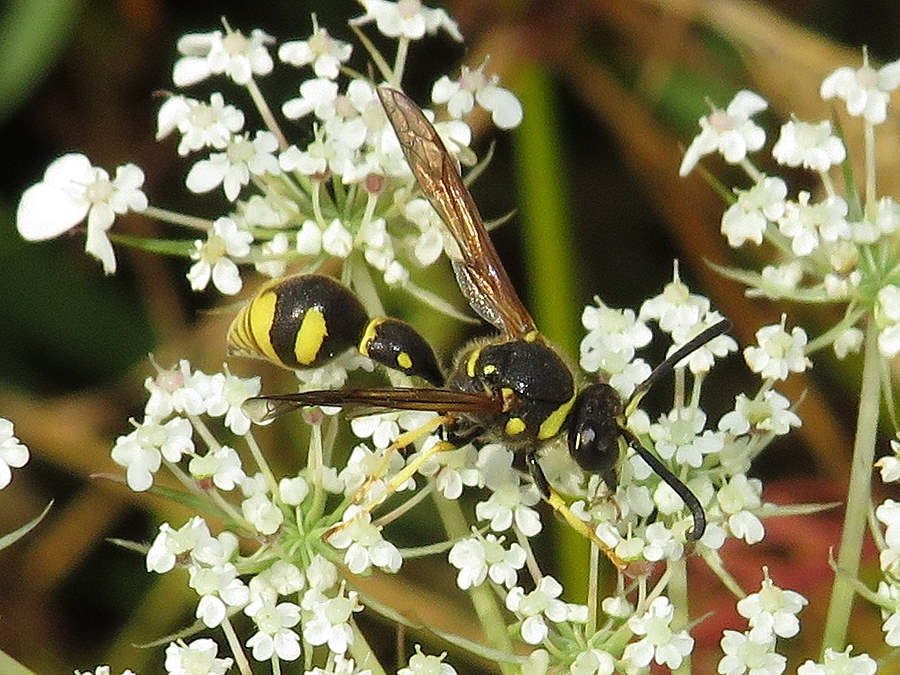
Some physical features place the potter and mason wasps in the vespid category. However, these wasps also get categorized as solitary rather than social wasps. They do not present the stinging dangers associated with paper wasps and yellowjackets.
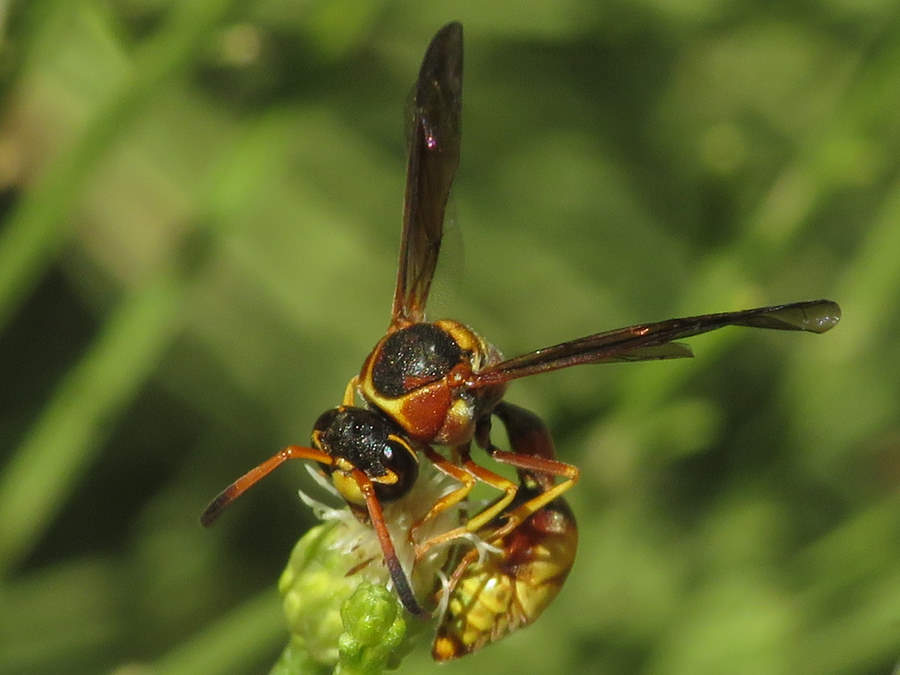
Red shading on the Boll’s potter wasp makes it an easy identification in Montana because it’s the sole red shaded eumenes species.
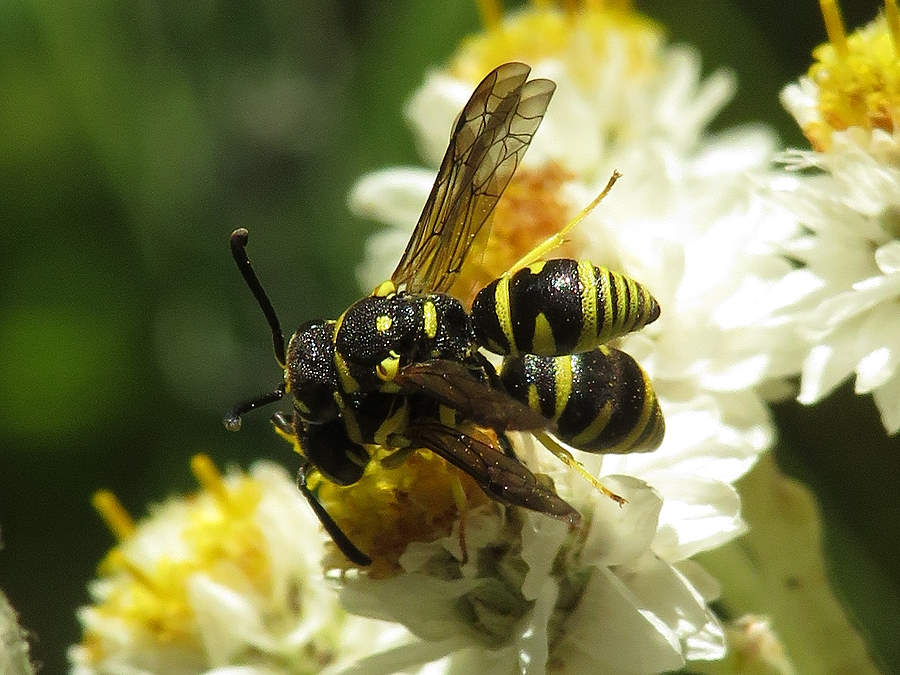
Most of potter wasps in other genera have a body shape like that depicted in the picture. They are small with a pointed end of the abdomen.
More Montana Wasps
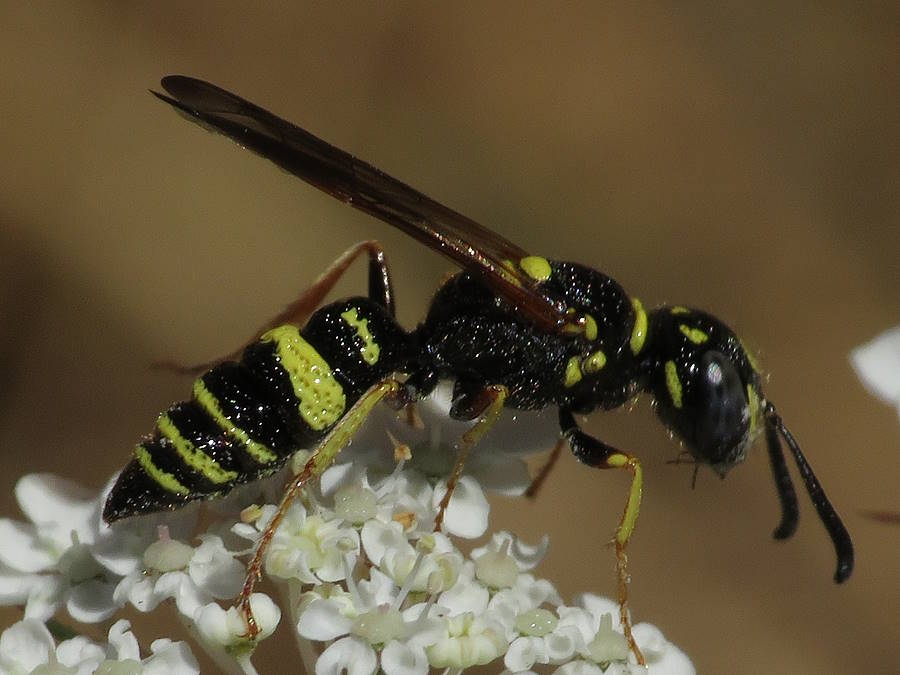
A few additional small wasps with black and yellow markings also hang out around the home and garden. Beewolves hang out looking for bees to catch for larval food.
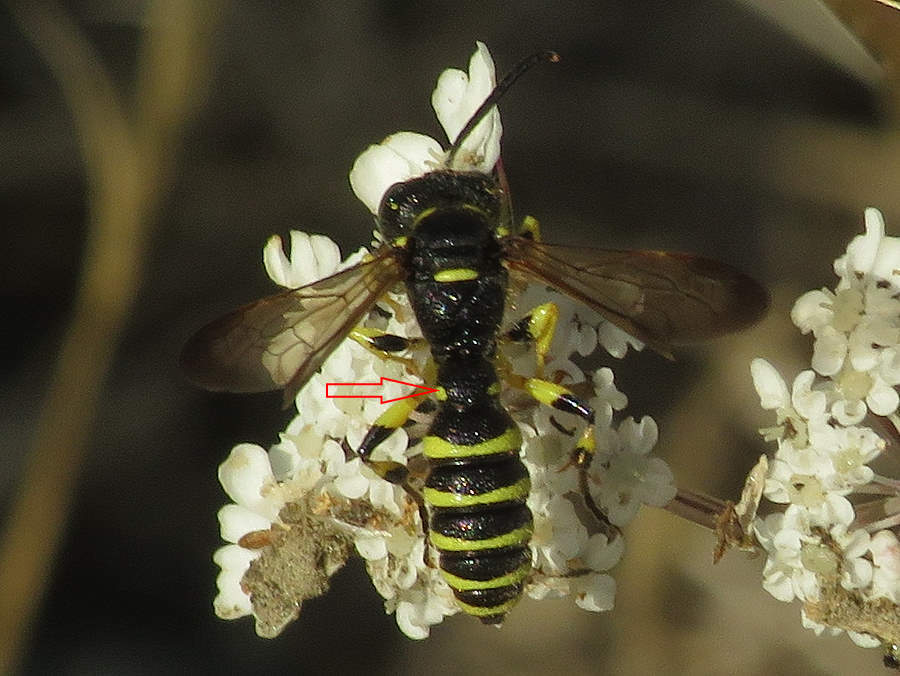
Weevil wasps, another of the small wasps, can be distinguished from the other types of small wasps by the presence of a smaller, top abdominal section. The red arrow points to the section.
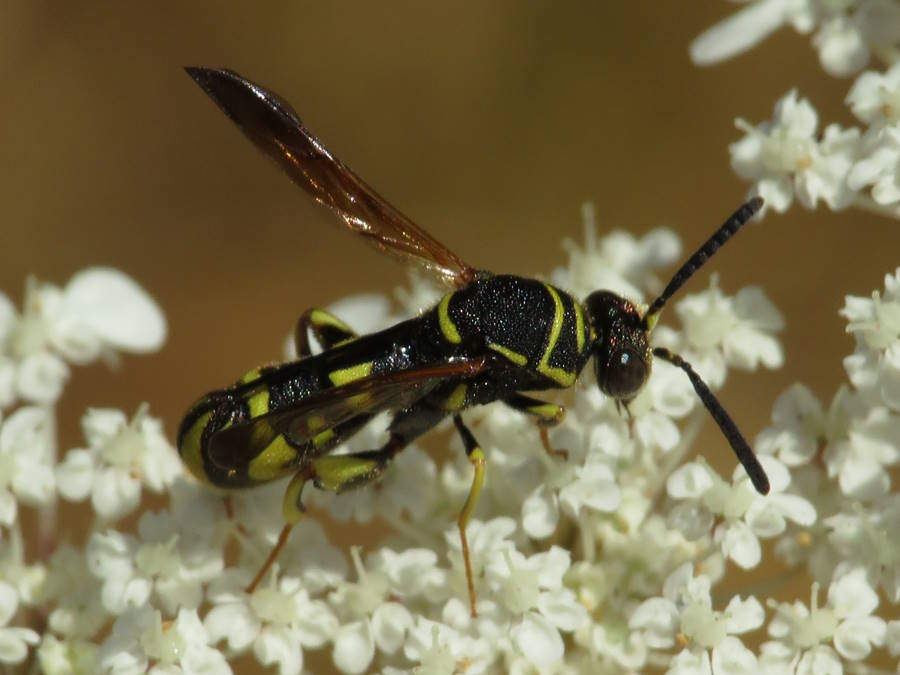
Lucospis affinis is a parasitic wasp that hangs out and looks for already provisioned nests to lay their eggs.
None of the small wasps around the flower bed typically create stinging problems for people.

Black and Yellow Mud Dauber

Great Golden Digger Wasp

Elegant Grass Carrying Wasp

Male California Velvet Ant

Female California Velvet Ant
Bees

North American hosts approximately one thousand different species, including its most familiar members, honey bees and bumble bees, along with less familiar names such as Cuckoo Bees, Carpenter Bees and Digger Bees.
The story of flower bees extends far beyond the basic honeybee. Approximately four thousand bees inhabit North America, and many households who practice bee friendly gardening get treated with their presence and pollination help.

California Bumblebee

California Bumble Bee (face)

Western Bumble Bee

Brown-belted Bumblebee (side)

Brown-belted Bumblebee (top)

Yellow-faced Bumble Bee (face)

Yellow-faced Bumble Bee (side)

Yellow-fronted Bumblebee (face)

Yellow-fronted Bumble Bee (side)

Yellow-fronted Bumble Bee (top)

Hairless and small in size, Cuckoo Bees family resemble wasps more than they resemble bees, making them among the least known of the family.
The common name cuckoo refers to the bee’s practice of brood parasitism, like it’s namesake in the bird world, the Cuckoo bird. Adults lay their eggs in ground nests of other bee species, and then let the young fend for themselves.

Digger Bee

Blue Orchard Bee

Leaf-cutter Bees (Megachile)

Western Longhorned Bee (face)

Western Longhorned Bee

Longhorned Bee

Oblong Woolcarder Bee

Female European Woolcarder Bee

Male European Woolcarder Bee

Stelis

Northern Rotund Resin Bee

California Digger-cuckoo Bee

Least Cellophane Cuckoo Bee

Red-footed Sharp-tailed Bee

Western Leafcutter Bee

Furrow Bee

Wide-striped Sweat Bee

Fine Lined Sweat Bee (female)

Fine Lined Sweat Bee (male)
